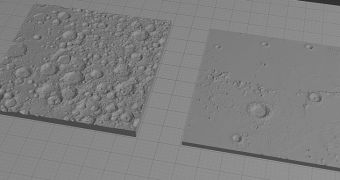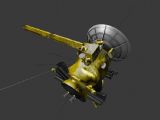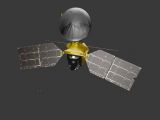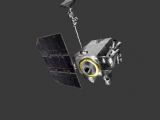The problem with telescopes is that you can only see so far through them. You can't hope to get a good look at the surface of the moon, and even the rings around Jupiter and Saturn will barely become visible at night.
NASA has decided to make it easier for astronomy lovers to see exactly what the surface of the moon is like, or what Mars is covered in. That is where 3D printing technology comes into play.
Long story short, NASA is offering 3D models through its website, models of the surface of the moon, other planets, even spacecraft like the Kepler observatory. Mars' Gale Crater is another example, as is the asteroid Eros.
The moon is receiving even more attention. 3D models exist for areas of both the near and the far sides of Luna. You can see and feel how many craters have accumulated over the years.
It's a real shame that you won't get to feel the moon dust at your fingertips, since 3D prints are made from solid material, usually plastic.
The moon has suffered many impacts, some huge (causing the Sea of Serenity) and many smaller ones. It is what happens when there is no atmosphere to break large rocks down before they hit. That is why the moon looks as though someone picked up a planet-sized machine gun and peppered it with bullets for a few years without stopping.
We should probably be thankful that whatever caused the appearance of Mare Serenitatis struck the moon and not our planet. A space rock as large as that one must have been would have made it through the atmosphere without a problem.
All the models offered through NASA's website are coded in STL format and can be downloaded for free. Unfortunately, you might not be able to reproduce all of them.
Why? Because consumer 3D printers don't exactly have the highest resolution / detail level, so it will be impossible to properly print the models that contain very small but detailed pieces. The Lunar Reconnaissance Orbiter is an example, since it was scaled down to around 100 mm / 4 inches width, like pretty much all other models actually.
In the future, designers may be called in to modify the models for lower-resolution printers, but until then, you will have to choose your battles. Chances are that new, more 3D printer-friendly models will appear before designers get around to modifying existing ones.

 14 DAY TRIAL //
14 DAY TRIAL // 



